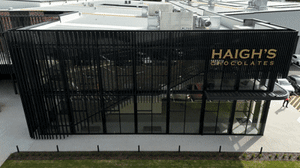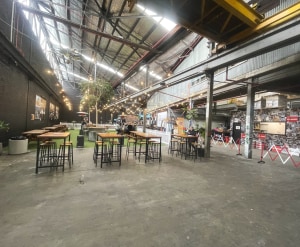Orora saw its sales revenue and its net profit after tax rise strongly in the first half of the financial year, saying its glass business had successfully redeployed all its assets that were previously used for wine bottles going to China.
Sales revenue was up by 10.6 per cent, nudging $2bn at $1.986bn, while underlying net profit after tax before significant items was $102.7m, up 12.9 per cent on the prior corresponding period, or 13.6 per cent on a constant currency basis.
Managing director and CEO Brian Lowe said he was “incredibly proud” of what he said was “a really strong set of results”, saying they “demonstrated an outstanding focus and execution of priorities”.
Lowe did though attribute almost all the 12.6 per cent rise in its North American revenue, which is 80 per cent of its business, to its price rises instigated to recover soaring input costs, with negligible organic growth. Inflation is rapidly rising in the US, it currently stands at 7.5 per cent.
Shares in the company soared on the half year figures, up by 8.5 per cent in early trade to $3.60, not far off its $3.70 high for the year, and 50 per cent up on its $2.34 low of 18 months ago.

Lowe said: “I am pleased to report that Orora delivered a strong result for the first half of the fiscal year 2022. Our performance reflects the unwavering focus of our team on executing our strategic priorities in the context of a global pandemic.
“The Group reported an increase in underlying net profit after tax and underlying EBIT on the prior corresponding period, demonstrating the continued strength of the Group’s diversified packaging assets and sustainable earnings.”
The loss of glass volume from the tariffs on Australian wine by China, which effectively ended much of the export business from Australian wine producers, impacting directly on Orora’s glass manufacturing operations, has been fully overcome, with growth in beer and water bottles, and new spirits and olive oil bottles successfully replacing the lost volumes. Orora makes two thirds of the Australian wine industry's glass bottles, with its Gawler plant producing around 900 million bottles a year overall.
Lowe said, “We are pleased with the Australasian business, which reported a solid result, having largely mitigated the impacts of lower wine glass volumes as the impact of Chinese tariffs on wine were cycled, with 100 per cent of this capacity now redeployed to new product categories. Cans demand remains strong, with solid volumes achieved across all categories.”
Orora will now invest $110m on extending the capacity on it cans line in Dandenong by 10 per cent, and on increasing its ends capacity in Ballarat by 40 per cent.
Its overseas operations make up 80 per cent of its revenue, Lowe said, “Our North American business produced another outstanding result in the first half, continuing to drive improvements in operating and financial performance, exercising pricing discipline in a higher inflation operating environment and delivering strong earnings growth in both the manufacturing and distribution Orora Packaging Solutions (OPS) businesses.
Orora’s display graphics operation Orora Visual (OV), and its OPS business, are both based in the US. It sold its Australian-based fibre packaging business three years ago for $1.7bn to Nippon Paper, which renamed it Opal. Its strategic review of OV concluded that the business would stay within Orora.
Lowe said, “Underpinning our results is the ongoing commitment to the Group’s corporate strategy, with clear strategic priorities formulated for each business unit. A strong balance sheet and operating cash flow ensures Orora is well positioned for growth, and continues to provide operating and strategic flexibility as we move forward. Our team remains disciplined and focused on delivering against our strategies, and I look forward to continuing our positive momentum in FY22.”
The company said it made good progress on its sustainability goals aligned to the refreshed pillars of circular economy, climate change and community. Orora says it is well on track to achieve its 2025 goal of 60 per cent recycled content in the glass packaging it manufactures. The company is also well on track to achieving a 40 per cent reduction in greenhouse gas emissions for Scope 1 and 2 by 2035, through a range of initiatives, and said its community pillar had seen it release a set of global diversity, equality and inclusion goals.
In its outlook Australasia EBIT growth is expected for the beverage business in in the second half, with full year EBIT to be broadly in line with last year. In North America, with sustained improvement in the performance of both OPS and OV, Orora expects its second half EBIT to be up on the prior year, with continued strong earnings growth for the full year.
Orora has eight plants in Australia and 14 in North America. Its new $25m glass recyling plant being built next door to its Gawler, South Australia site is on course to be opened in June, and will have the capacity to recycle around 400 million bottles a year.






